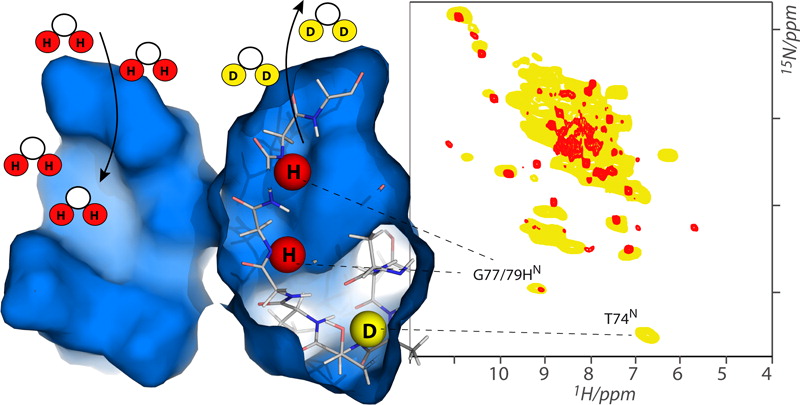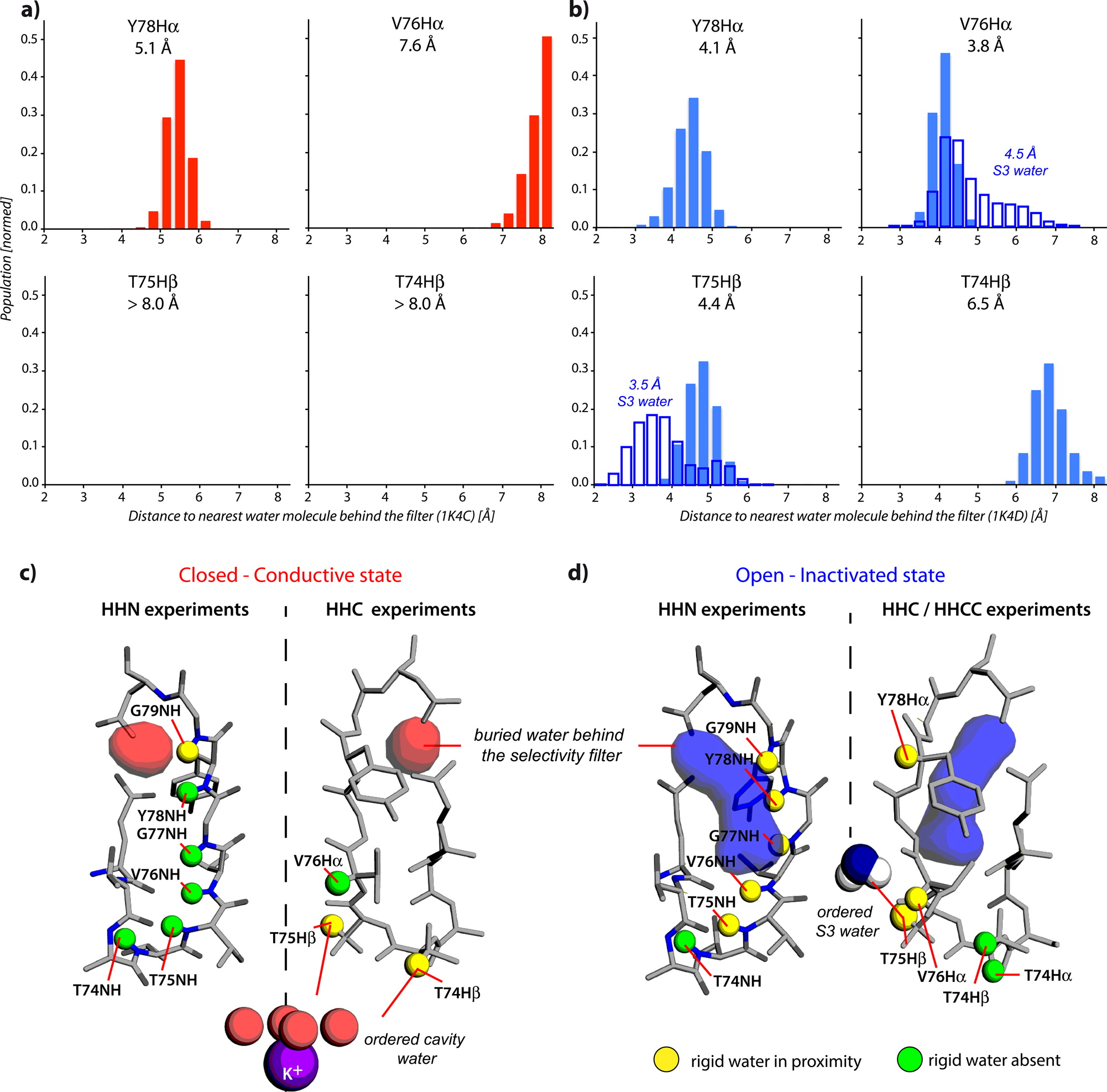Quantitative analysis of the water occupancy around the selectivity filter of a K+ channel in different gating modes
By Markus Weingarth, Elwin A. W. van der Cruijsen, Jared Ostmeyer, Sylke Lievestro, Benoît Roux, and Marc Baldus.
Published in Journal of the American Chemical Society 136(5): 2000-2007 on February 5, 2014. PMID: 24410583. PMCID: 4472312. Link to publication page.
Project: Dynamics of Ion Permeation and Conformational Coupling in – KcsA. Core Facility: Computational Modeling.

Abstract
Recovery in K+ channels, that is, the transition from the inactivated nonconductive selectivity filter conformation toward the conductive conformation, occurs on a time scale of the order of seconds, which is astonishingly long, given that the structural differences among the filter conformations are faint (<1 Å). Computational studies and electrophysiological measurements suggested that buried water molecules bound behind the selectivity filter are at the origin of the slowness of recovery in K+ channels. Using a combination of solid-state NMR spectroscopy (ssNMR) and long molecular dynamics simulations, we sketch a high-resolution map of the spatial and temporal distribution of water behind the selectivity filter of a membrane-embedded K+ channel in two different gating modes. Our study demonstrates that buried water molecules with long residence times are spread all along the rear of the inactivated filter, which explains the recovery kinetics. In contrast, the same region of the structure appears to be dewetted when the selectivity filter is in the conductive state. Using proton-detected ssNMR on fully protonated channels, we demonstrate the presence of a pathway that allows for the interchange of buried and bulk water, as required for a functional influence of buried water on recovery and slow inactivation. Furthermore, we provide direct experimental evidence for the presence of additional ordered water molecules that surround the filter and that are modulated by the channel’s gating mode.




